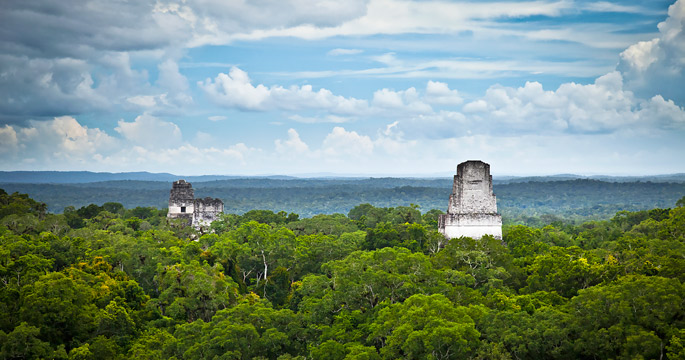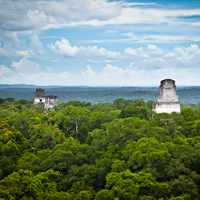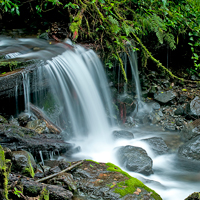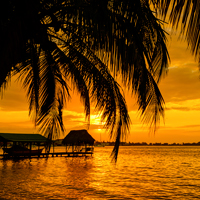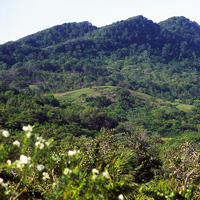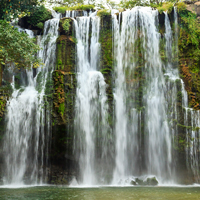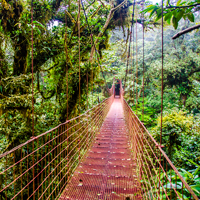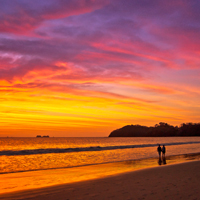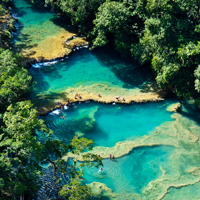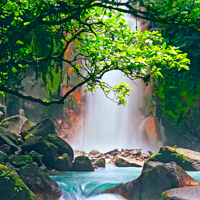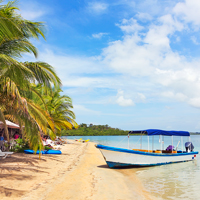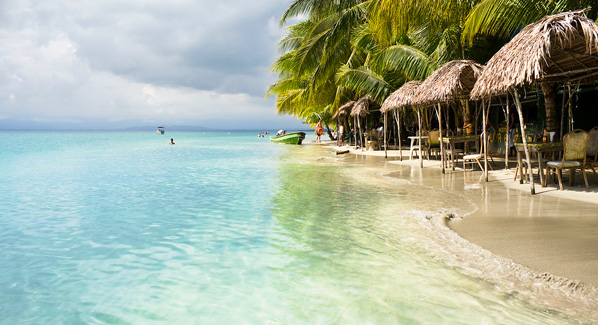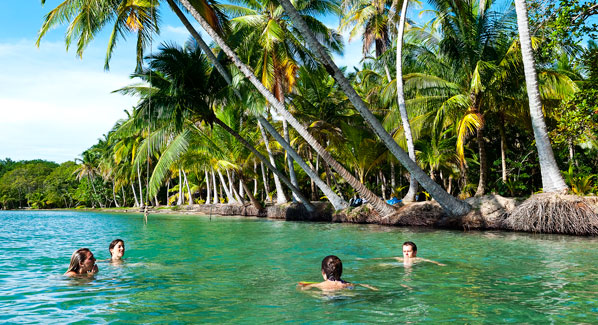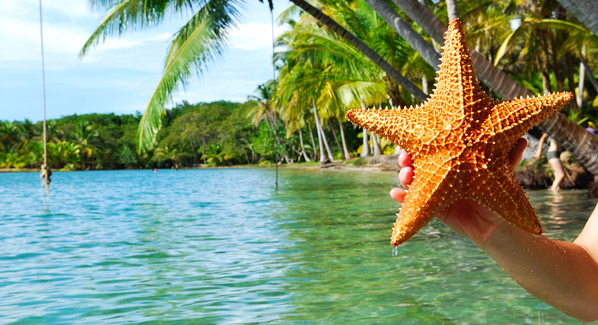Long before Europeans came to the Americas, the Mayan people lived in grand cities spread across Central America. Lying hidden under jungle growth for centuries, a growing number of these sites have become the focus of ongoing archeological reclamation. Guatemala is home to dozens of ancient cities, including some of the most significant edifices ever erected by the Mayan people. Here are three of the best.
Tikal
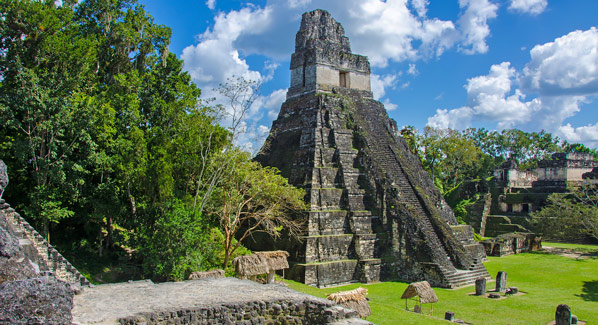
The Temple of the Grand Jaguar rises above the Grand Plaza at Tikal. This site is Guatemala’s most popular attraction. Photo: Simon Dannhauer/iStock
Once the capital city of a powerful Mayan kingdom, Tikal is now one of the largest and most significant archeological sites in Central America. It is also the region’s most popular tourism destination. The site, which is the centerpiece of a 220-square-mile national park, currently includes more than 3,000 structures from the Classic Mayan period, and excavation is ongoing. Signature landmarks of the site include the Grand Plaza, which is overlooked at opposite ends by the towering Temple of the Grand Jaguar and the Temple of the Masks. Those up to the challenge can tackle the steep stone steps of the pyramids to discover panoramic views from 150 feet above the jungle floor. This vista may evoke a faint sense of deja vu, as it was featured briefly in a wide shot of the rebel base in the original Star Wars. A number of tour companies offer one-day and overnight excursions to Tikal from the nearby lakeside towns of Flores San Andrés, as well as Belize City, Antigua and Guatemala City.
Yaxha
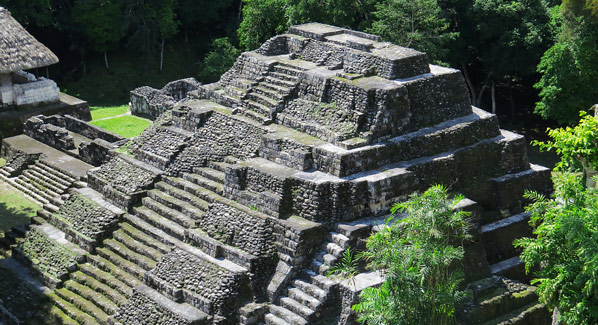
Climbers who negotiate the steep steps of Yaxha’s pyramids are rewarded with a view of the nearby lake of the same name. Photo: iStock
The ruins at Yaxha don’t receive as many visitors as Tikal, but have as much or more to offer in terms of both historic interest and scenic beauty. Rising from the greenery of the Petén jungle, the city’s ceremonial pyramids provide sweeping views of nearby Lake Yaxha. At the height of the Mayan Classical period, this city was a center of both commerce and religion, and its more than 500 remaining structures include palaces, ball courts, temples and a celestial observatory. Fans of the reality show Survivor may recognize this site, as it was the featured setting for the show’s 2005 season. Visits to Yaxha can be staged from many of the same starting points as excursion to Tikal. Some operators bundle visits to both sites into a one-day or multiple- day itinerary, and another favorite add-on is a side trip to the ruins of Topoxte, which lies on an island at the western end of Lake Yaxha.
El Mirador
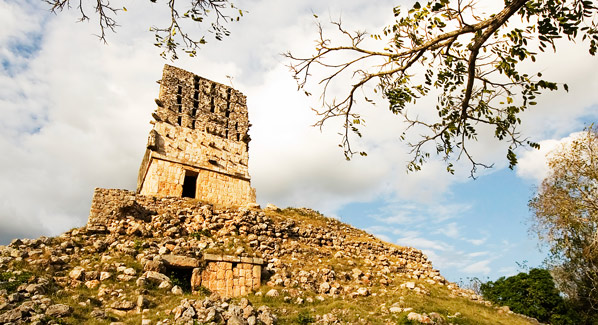
Earth and jungle still cover much of the ancient city of El Mirador, home to one of the largest pyramids in North America. Photo: Gerad Coles/iStock
Guatemala’s second-largest ancient city is reserved for those with a true sense of adventure—and sturdy walking shoes. Hidden in the rainforest near the Mexican border, El Mirador is one of the earliest known Mayan cities, with pre-Classic ruins dating back as far as 2,000 B.C. Much of this ancient metropolis remains covered in vegetation, but archeologists have reclaimed a number of impressive structures from the enveloping grasp of the jungle, including the 180-foot El Tigre Pyramid and the massive La Danta Pyramid, which at 230 feet is considered one of the largest man-made structures of the ancient world. There are no roads to El Mirador, and therefore no tour buses. Those willing to channel their inner Indian Jones can arrange for four- to seven-day expedition-style tours that begin with a four-wheel-drive ride, followed by a day of hiking or horseback riding through the jungle. An easier though pricier alternative is to charter a helicopter, which will whisk you to the site from the town of Flores in 45 minutes for a private guided tour of the site.

